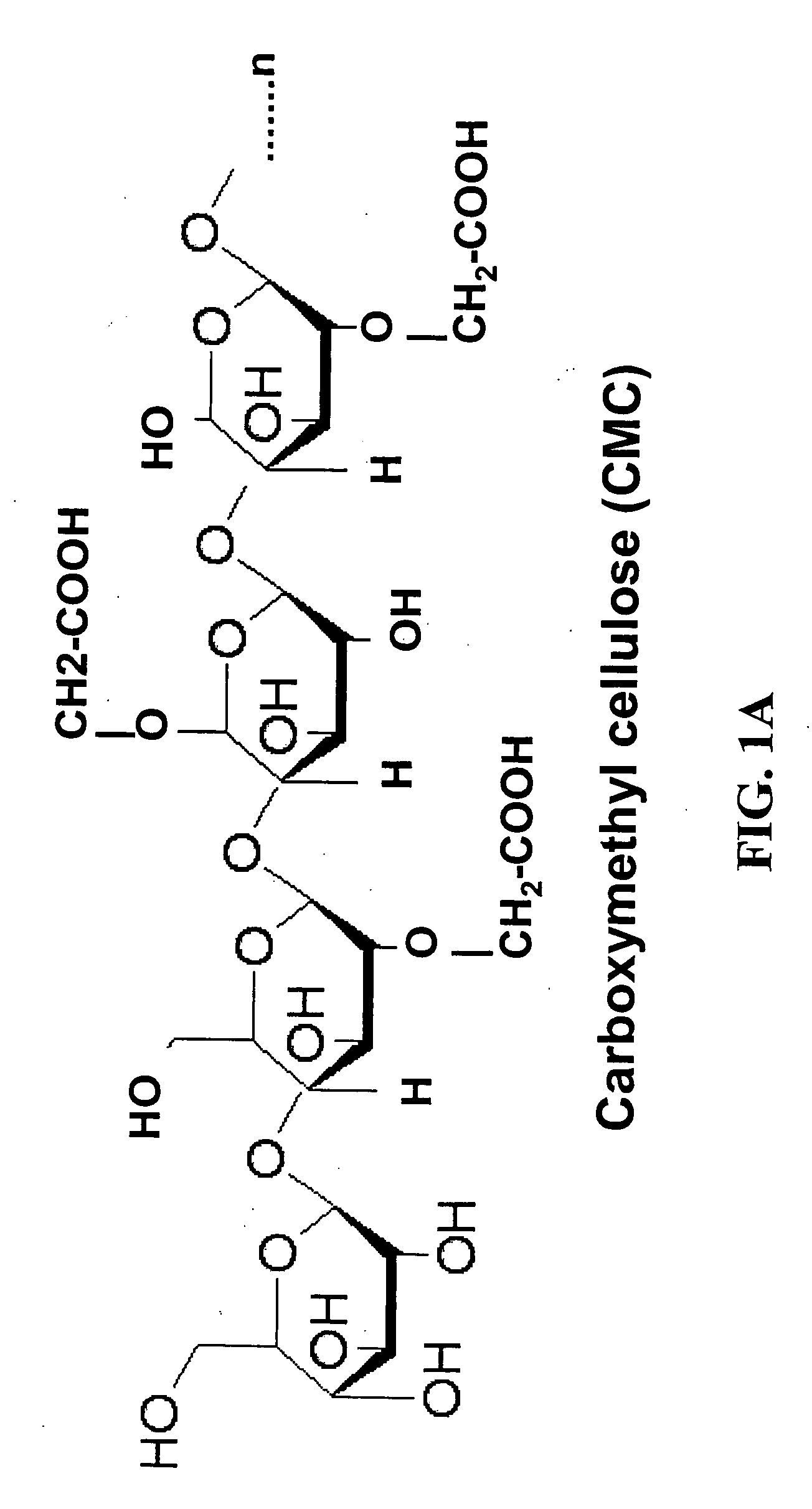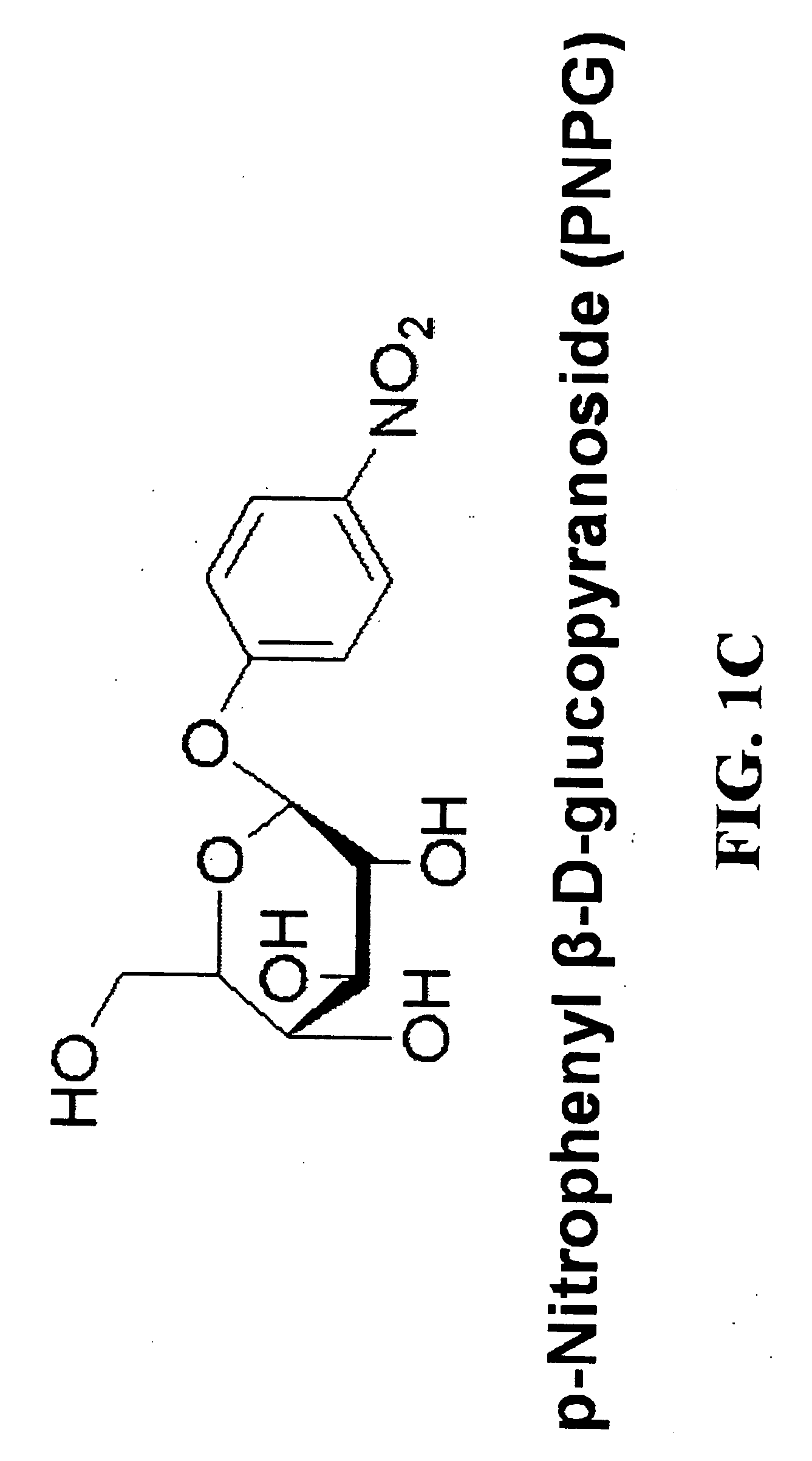Carbohydrate based cellulase inhibitors as feeding stimulants in termites
- Summary
- Abstract
- Description
- Claims
- Application Information
AI Technical Summary
Benefits of technology
Problems solved by technology
Method used
Image
Examples
example 1
Inhibition of Termite Cellulases by In Vitro Biochemistry
[0127]Using the materials and methods outlined above, optimal assay conditions were identified using CMC. The optimal conditions identified were substrate concentrations of CMC of approximately 0.5% (w / v) as shown in FIG. 2A; protein concentrations in the range of 0.5-1.5 mg / ml (FIG. 2B), assay times of 30 minutes (FIG. 2C), homogenization buffer pH of 5.8 (FIG. 2D) and assay temperatures of 32° C. (FIG. 2E). All these conditions were within linear activity ranges and were employed in all subsequent assays. For CMC assays, although assay temperatures between 28 and 52° C. provided linear substrate turnover, as shown in FIG. 2E, an assay temperature of 32° C. was deemed optimal because higher temperatures are excessive relative to ambient temperatures in the termite environment.
[0128]To determine if reduced cellulose present in the termite gut would interfere with the CMC assay, assays were also performed with heat-denatured pr...
example 2
Inhibition of Termite Cellulases Using In Vivo Feeding Bioassays
[0133]Two different termite colonies were used. A lab colony was used in bioassays that tested the effects of CBI and FMG; this was the same colony used in cellulase optimization studies, cellulase distribution studies, and for 150 determination. The other colony was a field colony, which was used to repeat the FMG assay along side FMCB. The no-choice feeding bioassay was derived from a previously-developed and slightly modified caste differentiation assay reported by M. E. Scharf, et al. in “Caste differentiation responses of two sympatric Reticulitermes termite species to juvenile hormone homologs and synthetic juvenoids in two laboratory assays.”Insectes Soc. 50 (2003) 346-354 and X. Zhou, et al. in “Social exploitation of hexamerin: RNAi reveals a major caste-regulatory factor in termites.”Proc. Nat. Acad. Sci. USA, 103 (2006) 4499-504.
[0134]The bioassay was run by placing worker termites 10 in a Petri dish 15, as s...
example 3
Post-Feeding Inhibition of Termite Cellulase
[0145]Endoglucanase, exoglucanase and β-glucosidase activities were further examined in pooled homogenates of whole termites alive at day 24 in the feeding bioassays. The goal of these experiments was to determine if there is agreement between inhibition observed in in vitro enzyme assays, feeding and mortality impacts after in vivo feeding bioassays.
[0146]From these termites, whole-body homogenates were prepared as described in a preceding section of in vitro analysis where the whole body homogenates are centrifuged and passed though glass wool to remove excess lipids before proceeding with cellulase activity assays. Using enzyme assay procedures as described above, the percentage inhibition of endoglucanase, exoglucanase and β-glucosidase activity were determined relative to methanol-treated controls.
[0147]FIGS. 11A-11C show the inhibition of ENDO, EXO AND BETA cellulase activity in individuals surviving feeding bioassays using various c...
PUM
 Login to View More
Login to View More Abstract
Description
Claims
Application Information
 Login to View More
Login to View More - R&D
- Intellectual Property
- Life Sciences
- Materials
- Tech Scout
- Unparalleled Data Quality
- Higher Quality Content
- 60% Fewer Hallucinations
Browse by: Latest US Patents, China's latest patents, Technical Efficacy Thesaurus, Application Domain, Technology Topic, Popular Technical Reports.
© 2025 PatSnap. All rights reserved.Legal|Privacy policy|Modern Slavery Act Transparency Statement|Sitemap|About US| Contact US: help@patsnap.com



